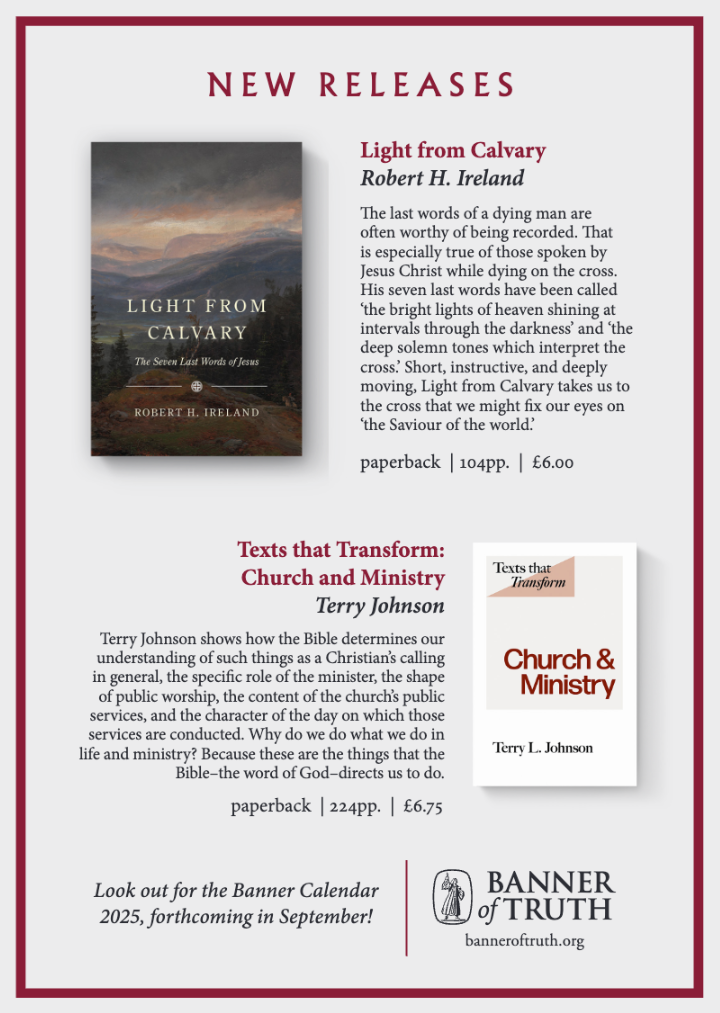Lawless or righteous?
Imagine a city divided into two parts by a river. On the South Bank live a tribe called ‘lawless’ and on the North a tribe called ‘righteous’. There is a single bridge across the river joining its two sections – a bridge called ‘the work of Christ’. Traffic crosses the bridge only one way. A lawless person may cross the bridge and become a righteous person, but the righteous cannot return to lawless territory. The city could represent the whole world, but for our purpose it represents the professing church.
This picture will, I believe, help us greatly to understand a passage in John’s first epistle that otherwise bristles with difficulties, namely, 1 John 3:4-10. We can consider these verses under three headings – the way of the lawless; the work of Christ; and the walk of the righteous. The first of these subjects forms the substance of this article; the others will be covered subsequently.
Practising sin
The most obvious problem posed by this passage is the way in which John describes sinners. They are lawless (v.4); they have neither seen nor known Christ (v.6); and they are the children of the devil (vv. 8, 10).
Yet in his opening chapter he states categorically that we are all sinners – ‘If we say we have no sin we deceive ourselves and the truth is not in us’. And he makes it crystal clear that this includes true believers, for ‘if we confess our sins he is faithful and just to forgive us our sins and to cleanse us from all unrighteousness’ (1 John 1:9).
So, has John forgotten what he wrote in chapter 1, or is he just confused? Actually, neither. This epistle is at times deliberately enigmatic. John delights to set puzzles for us to solve (1 John 1:7-8 is a further example). Why? To make us sit up and take notice – to stimulate us to think about what we are reading. It really does work!
John does leave clues, of course, but unfortunately in the present case the translators have obscured them. Look back to 2:29 where John speaks of those who ‘practise righteousness’. What he wrote literally is ‘do righteousness’ and that is exactly the construction he uses in 3:4 – ‘Whoever commits sin’ is literally ‘whoever does sin’.
This terminology has recently crept into our own language. When Tony Blair was Prime Minister, an interviewer asked him about his religious beliefs. Alastair Campbell, his director of strategy and communications, famously killed the question with the words, ‘We don’t do God’. Similarly, Christian writers increasingly refer to ‘doing church’ or ‘doing worship’.
The translators are right, therefore, to translate ‘do’ as ‘practise’ because the latter word relates to something done habitually. When you call your doctor to make an appointment you don’t expect his receptionist to say, ‘He’s in the surgery on Monday but he’s running a market stall on Tuesday and driving a bus on Wednesday’. Why not? Because the doctor practises medicine – that’s what he does habitually, as a profession, not as an occasional activity.
So, then, in 3:4 John is speaking of those who practise sin habitually – for whom sin is a matter of lifestyle. He is not referring to those who (in chapter 1) stumble as they walk in the light with God along the highway of holiness (1 John 1:7-2:2; Isaiah 35:8).
The way of the lawless
That this is the correct way to understand ‘sinners’ in our passage is proven by the further statements made about them in 3:6, 8 and 10. Notice that John is speaking of people within the church, for in this epistle he is writing only to those who ‘believe on the name of the Son of God’ (5:13).
Obviously, John includes here both true believers and nominal believers, for throughout the letter he speaks of those who profess good things but ‘do not practise the truth’ or remain ‘in darkness’ (e.g. 1:6, 8, 10; 2:4, 6, 9, 11; and so on).
In our passage John tells us three things about these people: they are lawless; they don’t know Christ; and they are ‘of the devil’. These are strong words when applied to professing Christians.
In describing them as lawless John doesn’t use the word ‘antinomian’ (no Bible writer uses such a word, in fact) but ‘anomian’. These are not people who aggressively reject God’s law but who simply ignore it – the moral teaching of Scripture means nothing to them. In spite of their profession of faith they are motivated, like other unsaved people, by ‘the [sinful] desires of the flesh and of the mind’ (Ephesians 2:3).
The desires of the flesh need no elaboration (Paul spells them out in Galatians 5:19) but note well how Paul includes the desires of the mind. John’s lawless tribe are characterised by self-centredness, pride, arrogance, a desire for pre-eminence, a failure to love, bitterness, backbiting, gossip, destructive criticism, neglect of others’ welfare, and so much more.
The lawless are unmoved by the fact that Scripture condemns such things. Their conscience is not tender towards the precepts, exhortations and commandments of God, neither do they tremble at his Word.
Ignorant of Christ
Secondly, the lawless have neither seen Christ nor known him (v.6). They have not seen Christ by faith, nor gazed upon his glory as ‘the only begotten of the Father, full of grace and truth’ (John 1:14). They have not understood his self-humiliation and therefore have no conception of the mind of Christ (Philippians 2:5-8). They are incapable of humbling themselves under the mighty hand of God (1 Peter 5:6). The doctrines of grace may reside in their heads but remain strangers to their hearts.
The problem? They simply do not know Christ, whatever they profess. Jesus declares, ‘This is eternal life, that they might know you, the only true God, and Jesus Christ whom you have sent’ (John 17:3). The lawless possess neither Christ nor eternal life.
The Sermon on the Mount includes some of the most solemn words Jesus ever spoke. In the day of judgement he will say to some who called him ‘Lord, Lord’ and claimed to have served him notably, ‘I never knew you; depart from me you who practise lawlessness’ (Matthew 7:23).
Those who don’t know Christ are not known by Christ, however much they claim to be his followers.
Thirdly, the lawless are ‘the children of the devil’. Why? Because they resemble him who ‘has sinned from the beginning’ (vv. 8, 10). Although they are found within the professing church they do Satan’s work, not Christ’s.
Like the devil, they are accusers of the brethren, railing critics or secret underminers of those who seek to serve Christ faithfully (Revelation 12:10). Like their ‘father’ they lead others into their own sinful ways and their root of bitterness penetrates deeply into the soil before it bursts into sight, scattering its ugly seeds.
How often a godly pastor has to survey some pastoral devastation and murmur, ‘An enemy has done this!’ (Matthew 13:28). How are we to deal with such people? Certainly, we must warn them solemnly of their sin and its consequences. But above all, we must preach the gospel to them and call on them to repent and believe!
The work of Christ
Thank God there is a bridge. I am writing, says John, ‘to you who believe in the name of the Son of God that you may know that you have eternal life’. But he then adds, ‘and that you may believe in the name of the Son of God’ (5:13). The NKJV inserts the words ‘continue to’ before the second ‘believe’ because it doesn’t make sense to exhort to believe those who, by definition, already do so.
But the insertion is mistaken. John is addressing two companies within the professing church. He knows that while all his readers claim to believe, some really do and others don’t – having no saving knowledge of Christ. So he has two messages. A message of assurance to those who demonstrated the reality of their faith (‘that you may know’) and an evangelistic message to those whose belief is only nominal (‘that you may [truly] believe’).
So it is, then, that John delineates the work of Christ – again in three statements. First, ‘in him is no sin’; second, ‘he was manifested to take away sin’; and third, ‘he was manifested that he might destroy the works of the devil’ (vv. 5, 8).
In a subsequent article we shall consider in depth how this saving work of Christ makes the lawless righteous – both by imputation and in practice.
Edgar Andrews







